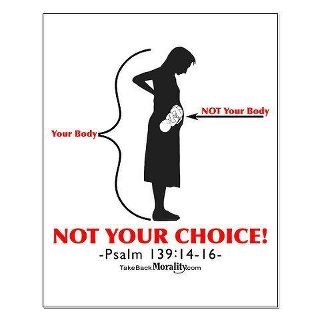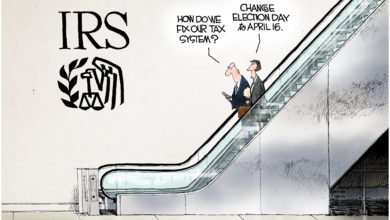The Case for Keeping Formula 1 Tickets Expensive
The 2022 Miami Grand Prix Formula 1 race took place on Sunday, the first-ever edition of the Miami Grand Prix. The track was the brand-new Miami International Autodrome, a purpose-built circuit around Hard Rock Stadium, the home of the Miami Dolphins.
As one can imagine, the hype around the event was intense, and the prices even more so. The cheapest grandstand tickets were $640, a price second only to Monaco on the Formula 1 calendar. What’s more, access to the general admission area was $300 on Friday and $500 for race day. To be fair, the organizers pulled out all the stops, turning the venue into something of a theme park and featuring live concerts among many other perks. Even so, those are steep prices, and many criticized Miami Grand Prix chief Tom Garfinkel for charging too much.
When asked about the criticisms in the days before the race, Garfinkel gave a response that would make any economist proud.
“Well, it’s partly the scarcity and supply and demand,” Garfinkel said. “I think one thing we didn’t do a very good job [with]—we can do a better job of in the future—is educating people about what a campus pass is,” he explained.
“For $300 on a Friday, you can come out and experience the race track. There’s a lot of different things with campus passes. There is so much to experience here…And then on the high end, yeah, we have some luxury experiences where the tickets are very expensive. So some of it was a function of supply and demand. But hopefully, we’ll deliver on that experience for the people that bought the tickets.”
Though Garfinkel’s defense is laudable, some may remain unconvinced. Even if the demand is there, they might reason, this still feels like profiteering. And besides, why should a rich person get more access to these kinds of events than a poor person?
To answer these objections, we need to step back and understand how we got here.
First off, there’s an underlying problem regarding event tickets: scarcity. As Thomas Sowell puts it, “there is never enough of anything to fully satisfy all those who want it.” In other words, since there are a limited number of seats and there is a lot of demand for them, there will almost always be people who want tickets who can’t get them.
To address scarcity, we need to introduce a system of rationing. In other words, we need a way to figure out which of the people who want tickets will get them and which of them won’t. Of course, it’s not nice that we have to do this. Having a super-abundance of everything would be way better. But that’s not the world we live in. We live in a world of scarcity, which means some type of rationing is unavoidable.
The question then becomes, what kind of rationing do we want to use? Well, let’s look at our options.
The most common type of rationing is called price rationing, which is what Garfinkel is employing when he sells tickets at high prices. In its purest form, you essentially auction off the resource (in this case, the tickets) to the highest bidder. Now, Garfinkel didn’t technically do this, but he’s still using someone’s willingness to pay as a means of choosing who gets the tickets, so it’s still price rationing for all intents and purposes.
Now, there are also non-price rationing systems that Garfinkel could have chosen instead. For instance, he could have given away tickets (or sold them at a low price) on a first come first served basis. Alternatively, he could have invited all interested parties to apply and then randomly chosen who would get tickets from the pool of applicants.
All three of these systems (price rationing, first come first served, and random distribution) have pros and cons. The main con of price rationing is obvious: it excludes the poor, even if they really want to attend. Correspondingly, the main benefit of the non-price rationing systems is that they provide equal opportunity. In theory, everyone has the same chance of getting tickets regardless of how rich they are.
But there are other things we need to consider as well.
For instance, first come first served often turns into a line-up game. Instead of paying with money, people are forced to demonstrate their eagerness to get tickets in terms of the time they are willing to wait in line. Remember the long queues for gas in the 1970s? It’s not exactly a picnic. People get frustrated and it’s a colossal waste of time. What’s more, it incentivizes people to spend their time waiting in line, rather than spending their time earning money so they can afford to buy the things they want.
Now, with online tickets, first come first served can sometimes turn into a game of luck, especially if tickets sell out within minutes of going live. In those cases, it has basically devolved into a random selection from the people who are interested enough to be there right when sales open.
So, what’s the downside with random selection? Quite simply, it completely eliminates a buyer’s ability to signal their interest. With first come first served you can at least signal your interest by being willing to wait in line. But with random selection, you can’t even do that.
Now, it’s certainly true that the existence of wealth disparities makes “willingness to pay” an imperfect reflection of how badly someone wants a ticket. A poor person who can only afford to pay $100 may want a ticket way more than a rich person who can afford to pay $1000.
But while price rationing makes imperfect allocations like this possible, random rationing pretty much guarantees that they will happen. At least with price rationing there is a tendency for the people who most urgently want tickets to be the people who get them. With random rationing on the other hand, the relative urgency of consumers isn’t taken into account at all. The person who saved up for years to see the race may lose out to someone who was barely interested.
Now, there’s a hybrid case which we can also consider, which is the case of price controls. If ticket prices are capped at a certain level, there will be elements of price rationing and non-price rationing happening at the same time. To the extent that the lower price still deters people, price rationing is working, but since there is more demand at the lower price than supply, there will inevitably be elements of queuing and/or randomness which will also play a role in determining who gets tickets and who doesn’t.
The other piece we need to consider is the supply side. With non-price rationing, prices don’t reflect demand, which means there’s no incentive for additional suppliers to provide the scarce resource. If prices can rise, however, that will signal the demand to entrepreneurs, and they will quickly get to work increasing the availability of the resource in question. In this case, higher prices will encourage entrepreneurs to put on more car races in the future.
This resource-allocation mechanism is actually the primary function of market prices, as the economist Ludwig von Mises points out in his economic treatise Human Action.
“The allocation of portions of the supply already produced and available to the various individuals eager to obtain a quantity of the goods concerned is only a secondary function of the market. Its primary function is the direction of production. It directs the employment of the factors of production into those channels in which they satisfy the most urgent needs of the consumers.”
So, keeping in mind these pros and cons, the question we need to ask ourselves is this. Even if price rationing is imperfect because it makes it more difficult for poorer people to attend, would we really want Garfinkel to ration tickets any other way? Would it be better to have endless queues, with people wasting thousands of hours to demonstrate their eagerness to see the race (a system which may also exclude the poor, who likely don’t have the time to wait in line)? Or would it be better to have random selection, where relative urgency isn’t taken into account at all? Neither of these options seem preferable to price rationing, which, aside from eliminating queues and prioritizing the highest bidders, has the added advantage of ushering in more supply for highly demanded goods and services, making them more accessible in the long run.
There’s a reason we use price rationing for all sorts of goods and services, from event tickets to toys to toilet paper. It’s not because people are evil and are determined to keep the poor from having nice things. It’s just that scarcity is real, and this is the best way we know to ration scarce resources.
So the next time you’re tempted to condemn some greedy capitalist for doing something you don’t like, such as charging high prices, step back and ask yourself, “what’s the problem being solved here, and what are the other alternatives for solving it?”
The market solution may not satisfy all our hopes and dreams for the world, but until we can come up with something better, we’d be wise to stick with it.
This article was adapted from an issue of the FEE Daily email newsletter. Click here to sign up and get free-market news and analysis like this in your inbox every weekday.
Content syndicated from Fee.org (FEE) under Creative Commons license.
Agree/Disagree with the author(s)? Let them know in the comments below and be heard by 10’s of thousands of CDN readers each day!




